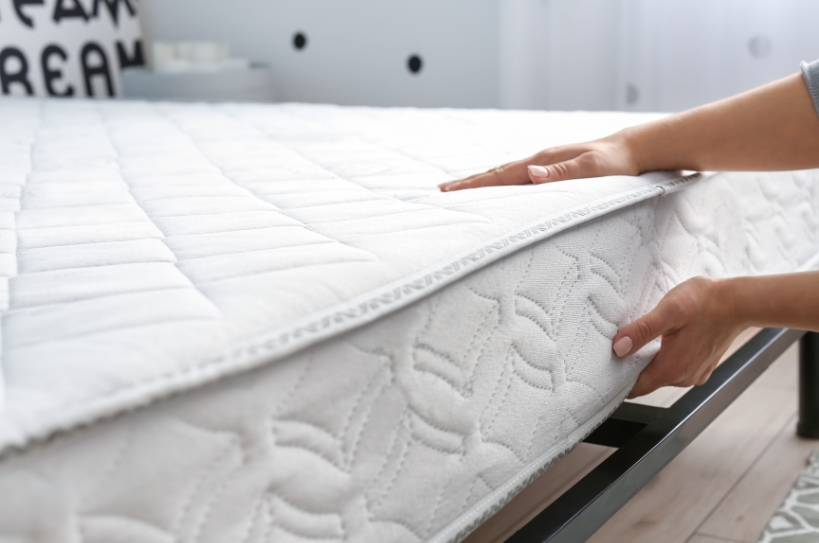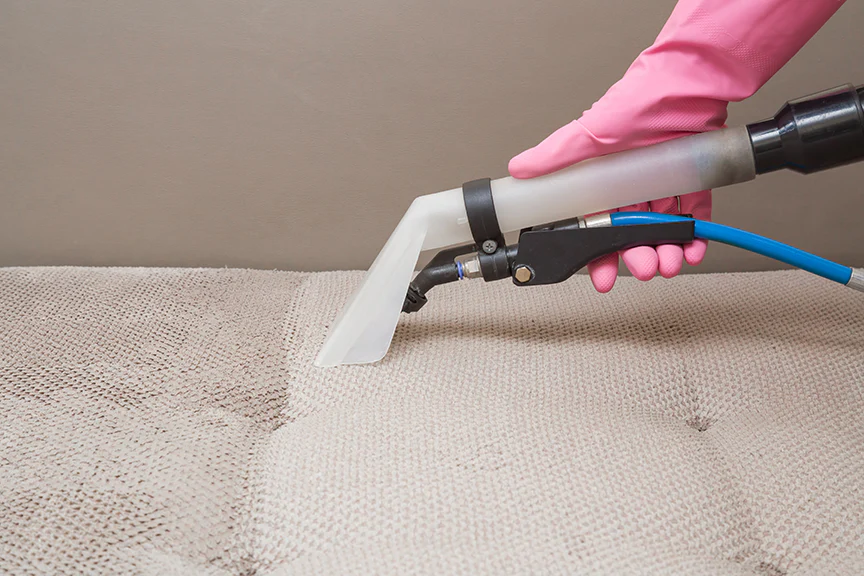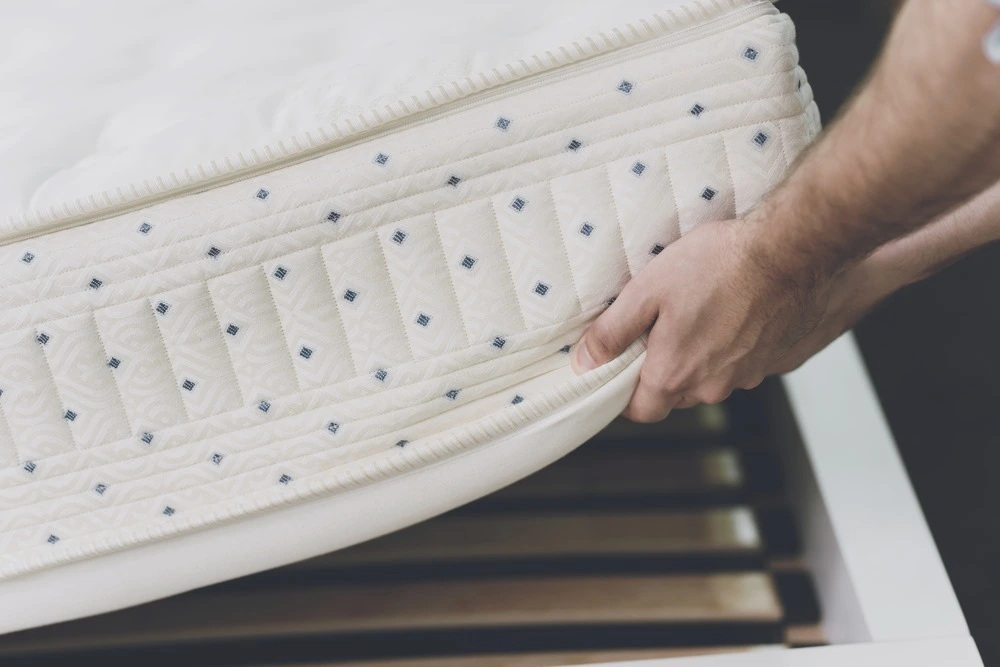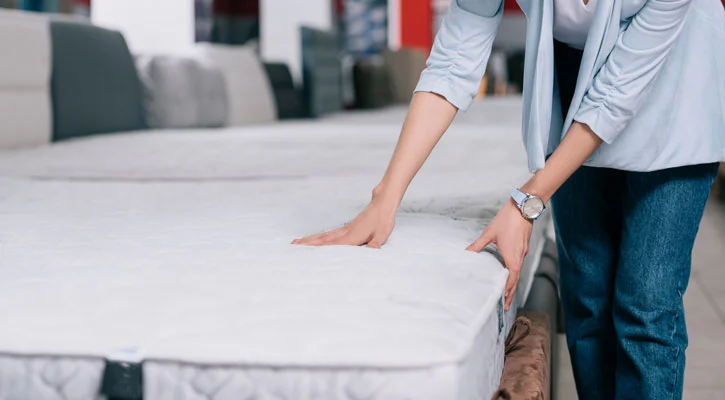Taking care of your mattress is essential if you want it to last longer. A good-quality mattress can be quite an investment, so it makes sense to do everything possible to extend its lifespan.
Proper mattress care not only ensures that you get the most out of your purchase, but also promotes better sleep hygiene and overall health.
The Importance of Mattress Care

Regularly caring for your mattress is important for several reasons. Firstly, a clean and well-maintained mattress is more comfortable to sleep on. Dirt, dust, and debris can accumulate over time, making sleeping uncomfortable.
Additionally, proper care can help prevent the development of mold, mildew, and bacteria, which can lead to unpleasant odors and potential health issues.
What is the average lifespan of a mattress?
Mattress lifespans can vary depending on several factors. On average, a mattress usually lasts between 7 and 10 years.
However, this is just a general estimate and the actual longevity of a mattress can be influenced by various factors such as the quality of materials used, the type of mattress, and the frequency of use. For instance, a high-quality and long-lasting mattress made from durable materials is likely to last longer compared to a cheaper, lower-quality one.
For more information about mattresses' lifespan, and how long you should keep your mattress, check out the article “How Long Does a Mattress Last?”
How to Make Your Mattress Last Longer?

1) Use a mattress protector
Some people completely disregard using a mattress protector, even though it’s one of the most effective things that could increase the longevity of your mattress,
As using a mattress protector will prevent any allergens, stains, or liquids from reaching the surface of the mattress, it also works as a buffer between your body and the mattress, so for example, if you’re a hot sleeper who tends to sweat during the night, the mattress protector will absorb the moisture and won’t let it affect the mattress.
2) Wash bedding frequently
Keeping your bed sheets clean is crucial to maintaining a clean mattress, as bed sheets protect the mattress from dust, moisture, and other factors that could shorten the lifespan of the mattress, so make sure to wash your bed sheets weekly.
3) Ensure your mattress is well supported
Whether you’re using a box spring, a platform, or putting your mattress on the floor, you need to make sure that your bed frame has a solid foundation that can accommodate its weight and the weight of its users.
If a mattress isn’t well supported, it will start showing signs of wear such as sagging, which will not only decrease the lifespan of the mattress but also disrupt your sleeping experience.
4) Rotate and flip your mattress regularly
If you occasionally flip your mattress to divide the amount of pressure placed on both sides, your mattress will most likely last for longer.
However, it is vital that, before doing that, you check with the manufacturer if your mattress can be flipped, as some mattresses aren’t equipped to be flipped and won’t provide the same level of comfort or support when they're flipped.
5) Clean up stains immediately:
One common issue that can affect the lifespan of a mattress is stains; however, if a stain does occur, it is important to clean your mattress immediately.
Using a gentle cleaning solution and a clean cloth, gently blot the stain until it is removed. Avoid scrubbing or rubbing the stain, as this can push it deeper into the mattress fibers and cause further damage.
6) Get another bed for your pets
While many pet owners enjoy sharing their bed with their furry friends, pet hair, dirt, and dander can accumulate on the mattress over time.
To prevent this, consider providing a separate bed for your pets to sleep on. Many pet beds are available and designed to be easy to clean and resistant to stains. You can safeguard your mattress from potential damage from pet hair and accidents by giving your pet its own designated sleeping area.
7) Beware of bedbugs
Bedbugs are another concern when it comes to maintaining the longevity of your mattress. These small insects can infest your mattress and be difficult to eliminate.
To prevent bedbugs, it is important to regularly inspect your mattress for any signs of infestation, such as small bloodstains or dark spots. If you suspect bedbugs, it is recommended that you contact a professional exterminator to address the issue immediately.
8) Protect your mattress when moving it
When it comes to moving your mattress, it is important to handle it with care to avoid any damage. Mattresses are vulnerable to tears or punctures if not properly protected during transportation.
Before moving, wrap your mattress in a protective cover or use a specialized mattress bag. This will help protect it from dirt, moisture, and potential rips. When lifting or carrying the mattress, be sure to use proper lifting techniques and avoid bending or folding it in ways that could cause damage to the internal structure.
9) Avoid misuse and abuse
Be mindful of any excessive jumping or rough play on the mattress. While it may seem fun at the moment, this can put unnecessary strain on the mattress springs and cause them to wear out prematurely.
Encourage gentle use of the mattress and remind children or guests about the importance of treating it with care.
10) Follow the manufacturer’s manual for proper care
Carefully read the manufacturer’s manual for a mattress care guide, or mattress care instructions on how to properly take care of and maintain your mattress, This won’t only increase the mattress's lifespan, but it will also prevent you from taking any action that could affect the mattress negatively. Make sure to know how often you should change your mattress pad, how to keep the mattress clean, and how to protect your mattress.
How to Clean Your Mattress
Regular Cleaning
- Vacuuming: Start by removing all the bedding and vacuuming the mattress thoroughly. This will help to remove any dust, dirt, or allergens that may have accumulated on the surface. Pay special attention to the seams and crevices where dust mites and bedbugs can hide.
- Spot Cleaning: Spot cleans any stains using a mild detergent mixed with water. Gently scrub the stained area using a soft brush or cloth, taking care not to saturate the mattress. Once the stains are removed, allow the mattress to dry completely before putting on fresh bedding.
Spills and Accidents
In the event of spills and accidents, it is important to act quickly to prevent stains and odors from setting in. First, blot up as much of the liquid as possible using a clean towel or paper towel.
Avoid rubbing the stain, as this can cause it to spread further into the mattress. Next, sprinkle baking soda over the affected area and let it sit for at least 30 minutes. Baking soda helps to absorb any remaining moisture and neutralize odors.
Afterward, vacuum up the baking soda and assess if any stains remain. If necessary, spot clean using a mixture of mild detergent and water, as mentioned earlier.
For more information about cleaning your mattress, check out the article “Cleaning Your Mattress: The Ultimate Guide.”
When to replace your mattress

Visible Signs of Wear
If your mattress starts to show visible wear and tear signs, such as sagging, punctures, or an uneven surface, it’s an indication that your mattress needs to be replaced, as it won’t provide the same level of comfort and support it used to provide.
Discomfort and Sleep Issues
If you experience joint and muscle pain or you wake up every day and don’t feel well-rested, that starts to affect other aspects of your life. That means that your mattress isn’t providing you with enough support, and losing support is a worn-out sign that indicates that you may need to change your mattress.
Other Indicators
There are other indications that you need to change your mattress, such as getting overheated during the night or feeling your partner move more often than usual, These indicators mean that your mattress's performance is declining and that it needs to be replaced.
FAQs
Are you supposed to flip your mattress?
Flipping and rotating your mattress regularly can extend the life of your mattress as it divides the pressure exerted on the mattress across both surfaces of the mattress, which will delay any chance of sagging or other wear and tear. However, you need to make sure that your mattress can be flipped before doing so, as some mattresses aren’t designed to be flappable.
How often should a mattress be replaced?
Many factors can extend or shorten a mattress's lifespan; such as the material as a memory foam mattress could last longer than a hybrid mattress or an innerspring mattress, however, the consensus is that you should replace your mattress every 7 to 10 years to make sure the performance of the mattress is consistent throughout the mattress lifespan.
How do you tell you need a new mattress?
If you wake up every morning feeling tired and experiencing joint and muscle pain that you didn’t used to feel before, that could be an indication that you need to replace your mattress, in addition to any visible wear and tear signs such as sagging and punctures.
What type of mattress lasts the longest?
If you are looking for a mattress that will stand the test of time, consider investing in a memory foam or latex mattress. Memory foam mattresses are made from a dense foam material that is designed to contour to the shape of your body, and it could last for a long time with you if you follow memory foam mattress care. Meanwhile, Latex mattresses are made from natural or synthetic latex, which is a resilient material that can withstand years of use without losing its shape or support.
How do I care for a memory foam mattress?
Memory foam mattress care can be tricky because, unlike a hybrid mattress or innerspring mattress, memory foam mattresses don't include innerspring and can sometimes overheat, so make sure to follow your mattress care guide to learn more about memory foam mattress care.
What are the benefits of using a mattress protector?
Mattress protectors offer a great solution to how to protect mattresses from dust mites, sweat stains, and mattress moisture, but they also require a maintenance routine, for example, you need to know how often to replace a mattress protector and how to properly clean it.
Conclusion
Making your mattress last longer requires consistent care and maintenance. By regularly cleaning your mattress, rotating it every few months, and using a mattress protector, you can extend its lifespan and ensure a comfortable sleeping environment. Investing in proper mattress care not only protects your investment but also promotes better sleep hygiene and overall well-being.
Jessica H.
Jessica is a reviewer, writer, and sleep enthusiast at Sleepiverse. Jessica graduated with her master's degree in Nursing research and education. She is a registered nurse and currently works in the Intensive Care Unit. Since becoming a nurse, Jessica has worked the night shift, which means a disrupted sleep schedule. Knowing she needed to function at her best while caring for patients at night, she spent a lot of time researching how to sleep well with a difficult schedule.


